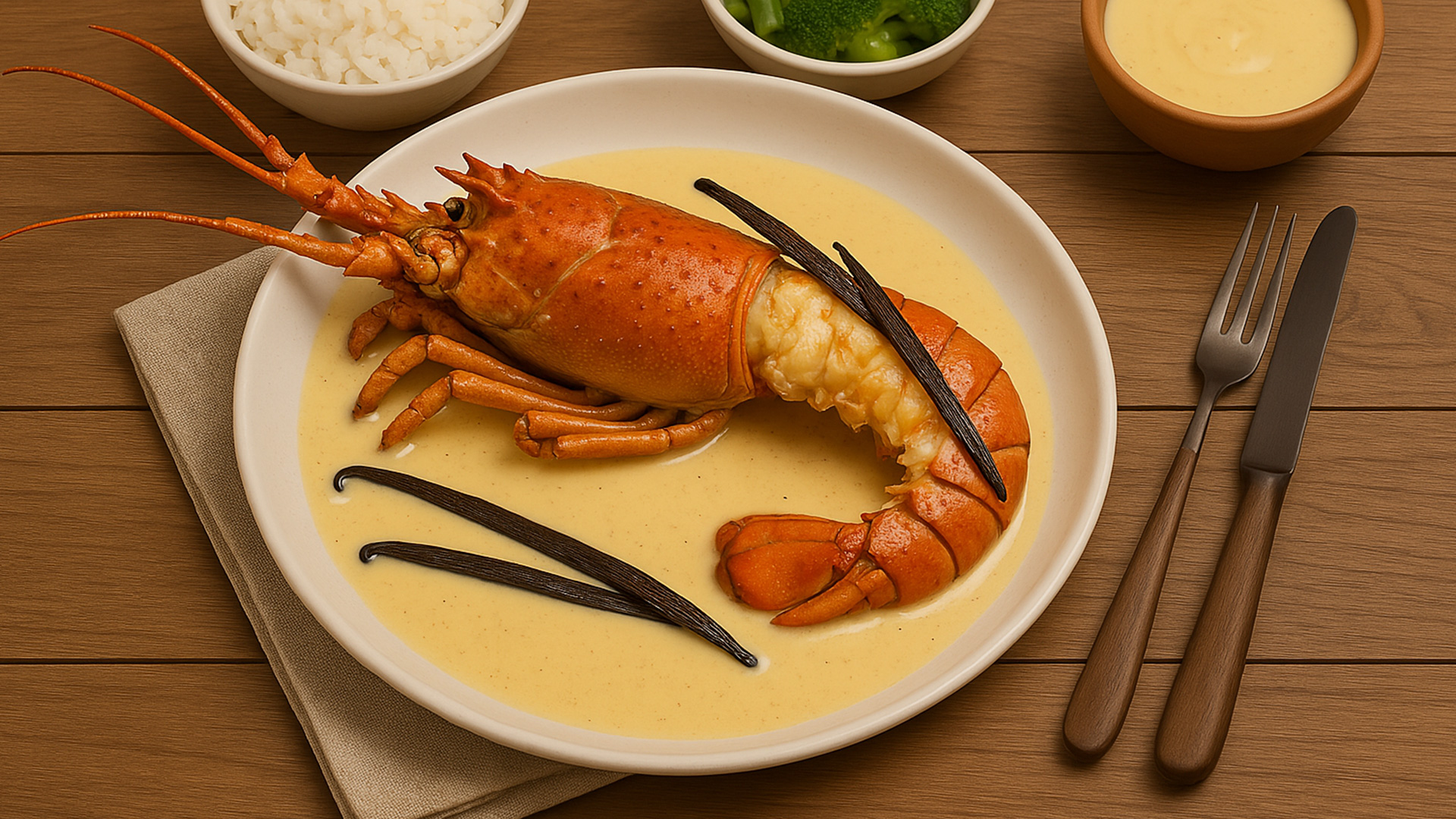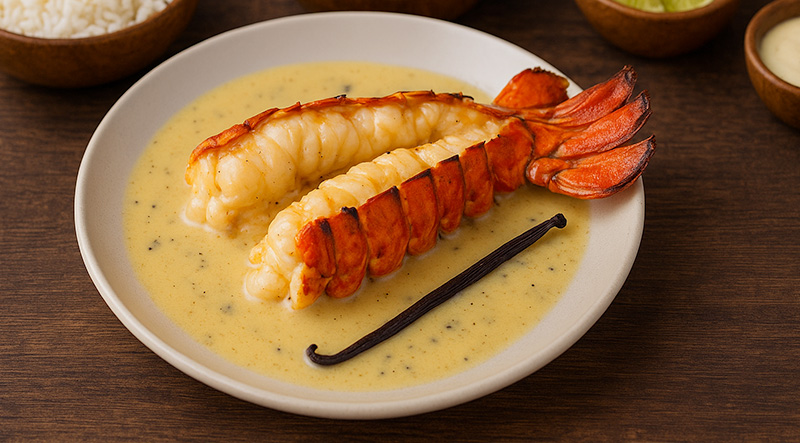Delicate, decadent, and kissed by the tropics, Langouste à la Vanille is the Comoros Islands’ most luxurious culinary gem. This unforgettable dish marries the sweet, buttery flavor of fresh spiny lobster with the island’s most prized treasure—aromatic vanilla pods—to create a silky, fragrant sauce that wraps the tender lobster in pure island elegance. Served with rice, fried plantains, or cassava, it’s a dish that tastes like a sea breeze and smells like paradise—bold, exotic, and beautifully Comorian. Read More...
The History of Langouste à la Vanille – The Comoros Islands’ Most Elegant Culinary Fusion:
In the warm, turquoise waters of the Indian Ocean, nestled between Madagascar and the eastern coast of Africa, lies a small archipelago rich in culture, spice, and flavor—the Comoros Islands. Among its most iconic dishes is the delicate and luxurious Langouste à la Vanille, or Lobster in Vanilla Sauce, a dish that perfectly captures the essence of this tropical paradise. It’s a shining example of Comorian culinary ingenuity, where land and sea meet through one of the most unexpected yet exquisite pairings: lobster and vanilla.
Rooted in the Islands’ Natural Wealth:
The history of Langouste à la Vanille begins with the natural bounty of Comoros itself. The islands are famed for producing some of the world’s finest vanilla, particularly the Bourbon variety, which is renowned for its deep, floral aroma and rich, sweet flavor. Vanilla cultivation in Comoros dates back to the 19th century, introduced by the French during the colonial period and quickly flourishing in the islands’ humid climate and fertile soil.
At the same time, the surrounding Indian Ocean teems with spiny lobsters, making seafood an everyday part of Comorian life. While lobster was traditionally grilled or boiled and served with coconut-based sauces or seasoned broths, the rise of vanilla as a local cash crop—and symbol of national pride—eventually inspired cooks to experiment with it as a savory ingredient.
A Colonial-Era Fusion Turned Culinary Icon:
Langouste à la Vanille likely emerged during the French colonial era, when European cooking techniques began to influence local cuisine. French chefs introduced the concept of cream-based sauces, reduction techniques, and the blending of sweet and savory flavors. Vanilla, which was typically used in desserts, began to appear in savory sauces—particularly in high-end dishes combining cream, butter, and wine.
In Comoros, local chefs adapted this culinary approach using their own bounty: spiny lobster caught off the coast, paired with a vanilla-infused cream sauce made from fresh island spices and tropical aromatics. What was once considered a luxury became a celebrated example of Comorian fusion cuisine, combining French technique with island ingredients.
A Dish of Prestige and Identity:
Today, Langouste à la Vanille is not an everyday meal—it’s reserved for special occasions, served to honored guests, and featured at upscale restaurants showcasing Comorian gastronomy. It’s seen as a symbol of national pride, highlighting the islands’ dual heritage: African island traditions and lingering French influence.
More than just a delicious dish, it represents the resourcefulness and elegance of Comorian cooking—taking two premium ingredients from the sea and the soil and transforming them into a singular, harmonious experience.
An Edible Expression of the Comoros:
In a land where flavors speak of both lush jungle and open ocean, Langouste à la Vanille stands tall as a culinary ambassador. It tells a story of natural abundance, colonial history, cultural fusion, and the enduring pride of a small island nation with a big flavor legacy. Each bite is a taste of Comoros itself—refined, exotic, and unforgettable.
Prepare the Lobster:
Sear the Lobster:
Make the Vanilla Sauce:
Optional: Add grated ginger or saffron now for deeper flavor.

Combine and Finish:

Serve:
Plate the lobster with a generous drizzle of vanilla sauce. Serve alongside:
Enjoy this elegant island dish that’s both indulgent and unforgettable!
The total preparation and cooking time for Langouste à la Vanille is approximately 45 minutes to 1 hour. This includes about 15–20 minutes for prepping the lobster (boiling and shelling if using whole lobster or cleaning the tails), 10 minutes to sear the lobster meat, and around 15–20 minutes to prepare the vanilla cream sauce and finish the dish. If serving with rice or plantains, allow an additional 10–15 minutes of cooking time for the sides, which can be done simultaneously. The dish is relatively quick to make considering its refined presentation and rich flavor.
A single serving of Langouste à la Vanille, based on the recipe provided and assuming it serves 3, contains approximately 450 to 600 calories. The lobster tail provides about 100–150 calories per serving, depending on size. The rich vanilla cream sauce made with butter, heavy cream, and white wine contributes the bulk of the calories—around 300–400 per portion—especially if using full-fat cream. Optional ingredients like coconut cream or added butter may slightly increase this. When served with a modest portion of rice or plantains, the total can rise to around 650–800 calories, making it a luxurious yet relatively balanced island meal.







